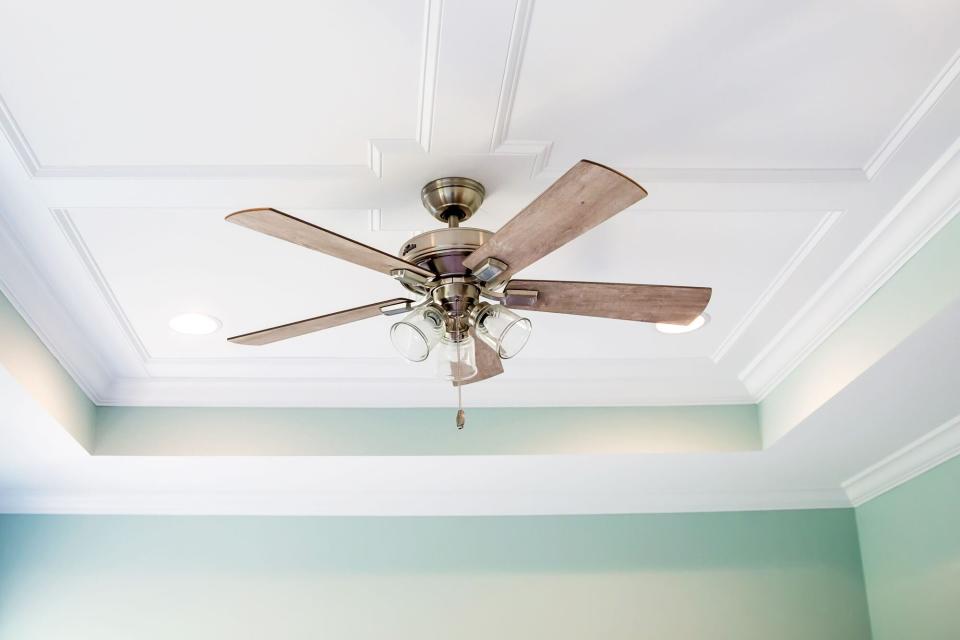How to Correct a Wobbly Ceiling Fan
Even a properly installed ceiling fan can begin to wobble over time without regular maintenance or cleaning. Luckily, these off-kilter appliances can be fixed quickly—tightening loose screws or clearing off dust typically does the trick. Ahead, Eamon Lynch, the director of warranty service at Power Home Remodeling, explains exactly what you need to know if these solutions don't cut it.
Related: The Best Ceiling Fans to Cool Every Part of Your Home

ucpage / Getty Images
Kill the power.
According to Lynch, the first step towards fixing your wobbly fan is paying a visit to your electrical breaker box. "Kill the power to the area of the home with the ceiling fan," he says, adding that next, you should clean each blade of the fan with warm, soapy water while keeping the appliance balanced.
Tighten things up.
"Take a Phillips screwdriver to tighten any of the screws or fasteners that may have worked themselves loose," Lynch shares. "There's a bracket that connects the fan to the blade. I'd put one hand on the bracket, and jiggle each blade a little bit to see if there is any separation or movement." Over time, the screws that secure the blade to the bracket often become loose, which is why you want to give them a once-over and retighten anything that doesn't feel snug. And if everything is securely tightened and your fan still wobbles? You may need to balance the individual blades. "You can purchase an electrical fan balancing kit at your local hardware store for just a few dollars," says Lynch. "No tools are required and you can adjust them as needed to balance each blade."
Know when to call a professional.
Generally, if you see exposed wires, have never worked with electrical wiring, or just aren't comfortable dealing with potential electrical issues, Lynch says you're better off leaving this job to a professional. "Not only can working with exposed wires shock you or cause other bodily harm, but it can also harm your electrical system if you short circuit it," he explains.
Prevent future wobbles.
Even if your fan isn't in a room that you frequently use, or it's stationary more often than it is in motion, Lynch says your fan will need regular cleaning; dust can build up on top of the blades. For fans that see frequent circulation, debris will accumulate on the front ends. "Over time, this buildup puts your fan blades off kilter," he explains. How often you clean your fan will depend on how frequently you switch it on—but Lynch says a good rule of thumb is to do so quarterly. "Use a step stool or ladder and carefully wipe each blade with a damp cloth," he says. "It's a messy job, but it's an important one to keep your fan functioning smoothly long-term."
A wobbly fan could be a safety hazard.
If left uncorrected, wobbling can eventually damage your fan. "I once had a fan that was so badly in need of maintenance that the housing (the part of the fan that contains the motor and electrical wiring) was starting to wear out. It was essentially hanging by the power cord," Lynch explains. "When a wobbling fan is unaddressed, it will ultimately start to drop to the side and spin sideways." If that happens, you run the risk of damaging anything below it, yourself included.

